Organic Farming – Key to Eco-friendly Agriculture?
Organic farming is more than just a trend; it's a revolutionary approach to agriculture that prioritizes the health of our planet while providing high-quality food. Imagine a world where the food we consume is grown without harmful chemicals, where the soil is alive with microorganisms, and where biodiversity flourishes. This is the essence of organic farming, a practice that has gained significant traction in recent years as consumers become more aware of the environmental impacts of conventional agriculture.
At its core, organic farming is about working with nature rather than against it. It employs natural processes and materials to cultivate crops, ensuring that the ecological balance is maintained. This method not only enhances the quality of the food produced but also contributes to the sustainability of our agricultural systems. The principles of organic farming are rooted in the idea that healthy ecosystems lead to healthy food. By embracing these principles, farmers can create a more resilient agricultural environment, benefiting both the land and the people who rely on it.
But what exactly makes organic farming a key player in eco-friendly agriculture? Let's break it down:
- Natural Processes: Organic farming relies on natural processes such as composting, crop rotation, and biological pest control, which help maintain soil fertility and promote biodiversity.
- Reduced Chemical Use: By avoiding synthetic pesticides and fertilizers, organic farming minimizes the risk of chemical runoff into our waterways, protecting aquatic ecosystems.
- Enhanced Food Quality: Organic produce is often fresher and free from harmful residues, making it a healthier choice for consumers.
- Support for Local Economies: Many organic farms are small, family-owned operations that contribute to local economies and promote community well-being.
In essence, organic farming is not just about the absence of chemicals; it's about fostering a holistic approach to agriculture that respects the natural world. As we face the challenges of climate change and environmental degradation, the importance of sustainable practices like organic farming cannot be overstated. It offers a viable solution for producing food in a way that is both environmentally friendly and economically sustainable.
Q: What is organic farming?
A: Organic farming is an agricultural method that emphasizes the use of natural processes and materials, avoiding synthetic fertilizers and pesticides.
Q: Why is organic farming important?
A: It promotes environmental sustainability, improves soil health, and provides healthier food options, contributing to overall ecosystem health.
Q: Are organic products more expensive?
A: Yes, organic products can be more expensive due to higher production costs, but many consumers are willing to pay a premium for the health and environmental benefits they offer.
Q: How can I support organic farming?
A: You can support organic farming by purchasing organic products, advocating for sustainable agricultural practices, and even considering growing your own organic garden.
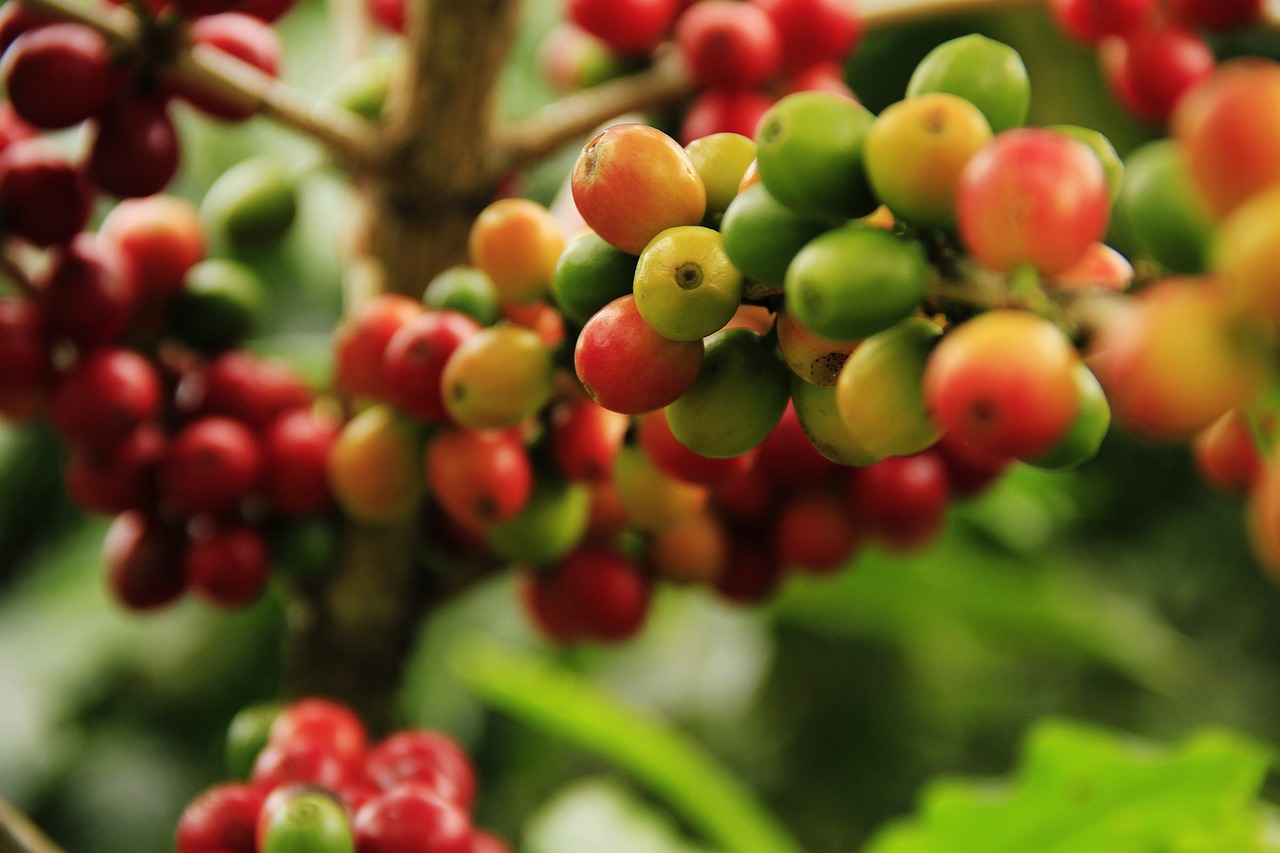
Understanding Organic Farming
This article explores the principles of organic farming, its benefits, challenges, and its role in promoting sustainable agriculture while preserving the environment and enhancing food quality.
Organic farming is more than just a method of growing food; it's a holistic approach that intertwines the health of the soil, the ecosystem, and the community. At its core, organic farming emphasizes the use of natural processes and materials, steering clear of synthetic chemicals and genetically modified organisms (GMOs). This practice aims to maintain ecological balance and enhance biodiversity while producing high-quality food that nourishes both people and the planet.
One of the fundamental principles of organic farming is the idea of sustainability. Farmers strive to create a self-sustaining agricultural system that minimizes external inputs. This involves using techniques that work in harmony with nature rather than against it. For instance, organic farmers often utilize crop rotation, a method where different types of crops are planted in succession on the same land to improve soil health and reduce pest problems. This practice not only boosts soil fertility but also disrupts the life cycles of pests, leading to healthier crops.
Another essential aspect of organic farming is the focus on soil health. Healthy soil is a living ecosystem, teeming with microorganisms that play a crucial role in nutrient cycling. Organic farmers enhance soil fertility through practices like composting and the use of cover crops. Composting transforms organic waste—such as food scraps and plant residues—into rich, nutrient-dense soil amendments that improve soil structure and fertility. Cover crops, on the other hand, are planted during the off-season to prevent soil erosion, enhance nutrient availability, and suppress weeds.
In addition to these practices, organic farming also promotes biodiversity. By cultivating a variety of crops and maintaining natural habitats, organic farmers create ecosystems that support beneficial insects and wildlife. This biodiversity is crucial for pollination and natural pest control, reducing the need for chemical interventions. In fact, studies have shown that organic farms typically harbor more wildlife than conventional farms, contributing to a healthier environment.
Overall, understanding organic farming involves recognizing its multifaceted nature. It’s about fostering a relationship with the land that respects natural processes and leads to the production of nutrient-rich food. As consumers become more aware of the benefits of organic produce, the demand for these products continues to grow. This shift in consumer preference not only supports the health of individuals but also contributes to the sustainability of our planet.
Organic farming offers numerous benefits, including improved soil health, reduced chemical usage, and enhanced biodiversity. These advantages contribute to a more sustainable agricultural system and healthier food options for consumers.
Healthy soil is the foundation of organic farming. Techniques such as crop rotation, composting, and cover cropping enhance soil fertility, leading to better yields and reduced erosion.
Composting is a vital practice in organic farming, transforming organic waste into nutrient-rich soil amendments. This process enriches soil health and reduces waste, promoting a circular economy.
Crop rotation is essential for maintaining soil fertility and preventing pest buildup. By alternating crops, farmers can enhance nutrient availability and reduce the reliance on synthetic fertilizers.
Organic farming promotes biodiversity, which is crucial for ecosystem health. Diverse cropping systems support beneficial insects, improve pollination, and enhance pest control, creating a resilient agricultural environment.
Despite its benefits, organic farming faces challenges such as higher labor costs, pest management issues, and market access. Understanding these obstacles is essential for the growth of organic agriculture.
Managing pests and diseases organically requires innovative strategies, including the use of natural predators and organic-approved pesticides, which can be more labor-intensive than conventional methods.
Organic farmers often struggle with market access due to certification costs and competition. However, growing consumer demand for organic products presents opportunities for farmers to thrive in this niche market.
- What is organic farming? Organic farming is an agricultural method that focuses on growing food without synthetic fertilizers or pesticides, emphasizing natural processes and sustainability.
- What are the benefits of organic farming? Benefits include improved soil health, reduced chemical use, enhanced biodiversity, and the production of healthier food options.
- Is organic farming more expensive? While organic products can be more expensive due to higher labor costs and certification fees, many consumers are willing to pay a premium for the perceived health and environmental benefits.
- How does organic farming support biodiversity? Organic farming practices promote diverse cropping systems that support a variety of plants and animals, which enhances ecosystem health and resilience.
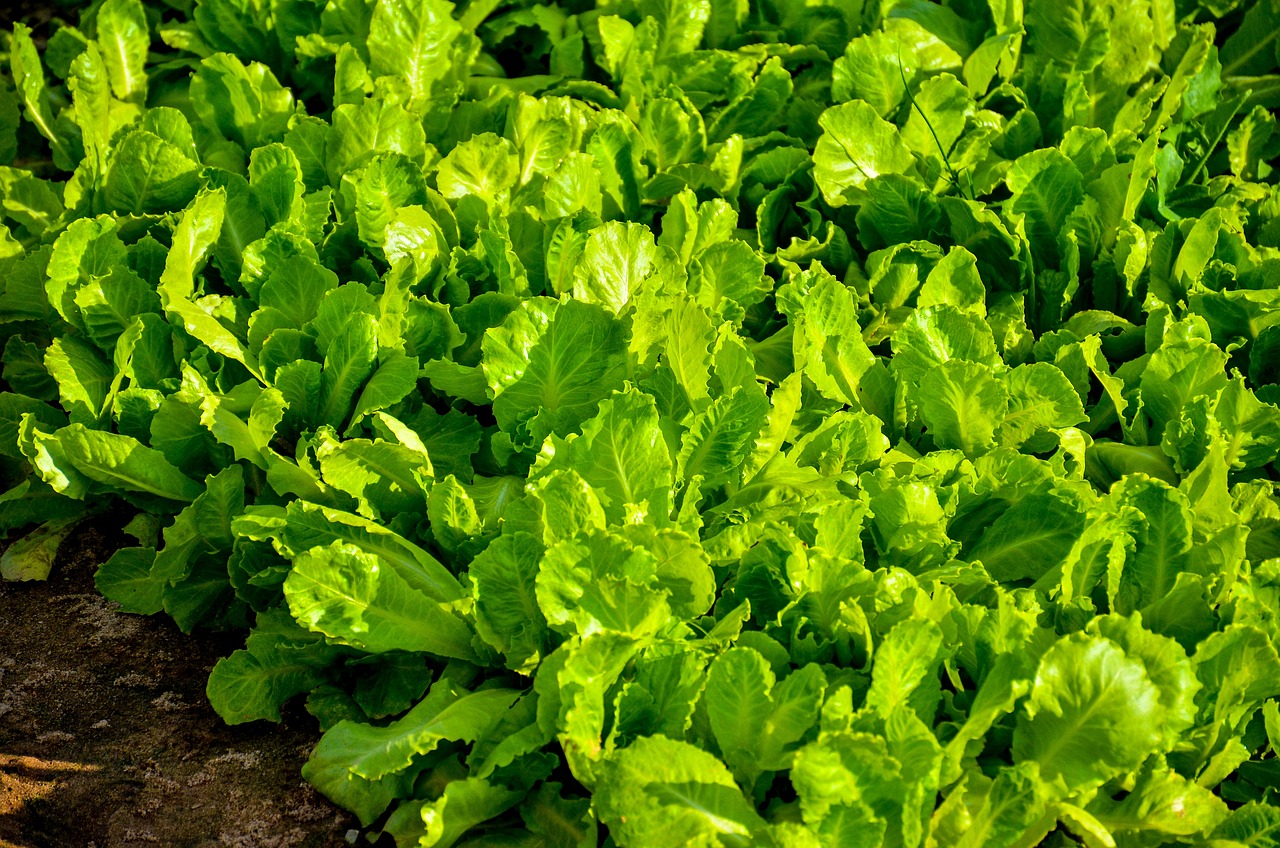
Benefits of Organic Farming
This article explores the principles of organic farming, its benefits, challenges, and its role in promoting sustainable agriculture while preserving the environment and enhancing food quality.
Organic farming is a holistic approach to agriculture that emphasizes the use of natural processes and materials. It aims to maintain ecological balance and biodiversity while producing high-quality food.
When it comes to agriculture, the choice between organic and conventional farming can feel like a tug-of-war. But let’s dive into the , which are as compelling as they are numerous. Firstly, organic farming significantly improves soil health. This is not just a matter of growing crops; it’s about nurturing the very foundation of our food system. Healthy soil is teeming with life, and practices like composting and crop rotation enhance its fertility. Think of it as feeding the earth so it can feed us.
There’s also the issue of chemical usage. In organic farming, the reliance on synthetic fertilizers and pesticides is dramatically reduced. This leads to a cleaner environment, as fewer chemicals seep into our water systems and soil. Imagine a world where your food is grown without the heavy hand of chemicals—sounds refreshing, right?
Moreover, organic farming promotes biodiversity. This means a greater variety of plants and animals on the farm, which is crucial for a balanced ecosystem. Diverse cropping systems support beneficial insects and improve pollination, which in turn enhances pest control. In essence, organic farms can be seen as mini-ecosystems, thriving with life and resilience.
Let’s not forget about the health benefits for consumers. Organic foods are often fresher and more flavorful, as they are grown without artificial preservatives. When you bite into an organic apple, you’re not just tasting fruit; you’re savoring the essence of nature itself. Plus, studies suggest that organic produce may contain higher levels of certain nutrients, making it a better choice for health-conscious consumers.
Here's a quick overview of some key benefits of organic farming:
| Benefit | Description |
|---|---|
| Soil Health | Improves soil fertility and structure through natural practices. |
| Reduced Chemicals | Minimizes the use of synthetic fertilizers and pesticides. |
| Biodiversity | Encourages a diverse range of plants and animals, enhancing ecological balance. |
| Healthier Food | Often fresher and richer in nutrients, offering better taste and quality. |
In summary, the benefits of organic farming extend beyond just the farm itself. They ripple through the environment and into our kitchens, promoting a healthier lifestyle and a more sustainable world. So, why not embrace this eco-friendly approach? It’s not just about farming; it’s about creating a better future for our planet and ourselves.
Despite its benefits, organic farming faces challenges such as higher labor costs, pest management issues, and market access. Understanding these obstacles is essential for the growth of organic agriculture.
Managing pests and diseases organically requires innovative strategies, including the use of natural predators and organic-approved pesticides, which can be more labor-intensive than conventional methods.
Organic farmers often struggle with market access due to certification costs and competition. However, growing consumer demand for organic products presents opportunities for farmers to thrive in this niche market.
- What is organic farming? Organic farming is an agricultural method that avoids synthetic fertilizers and pesticides, focusing instead on natural processes.
- How does organic farming benefit the environment? It promotes biodiversity, improves soil health, and reduces chemical runoff into waterways.
- Are organic foods healthier? Many studies suggest that organic foods may contain higher levels of nutrients and are free from harmful chemicals.
- What are the challenges faced by organic farmers? Challenges include higher labor costs, pest management issues, and difficulties in accessing markets.
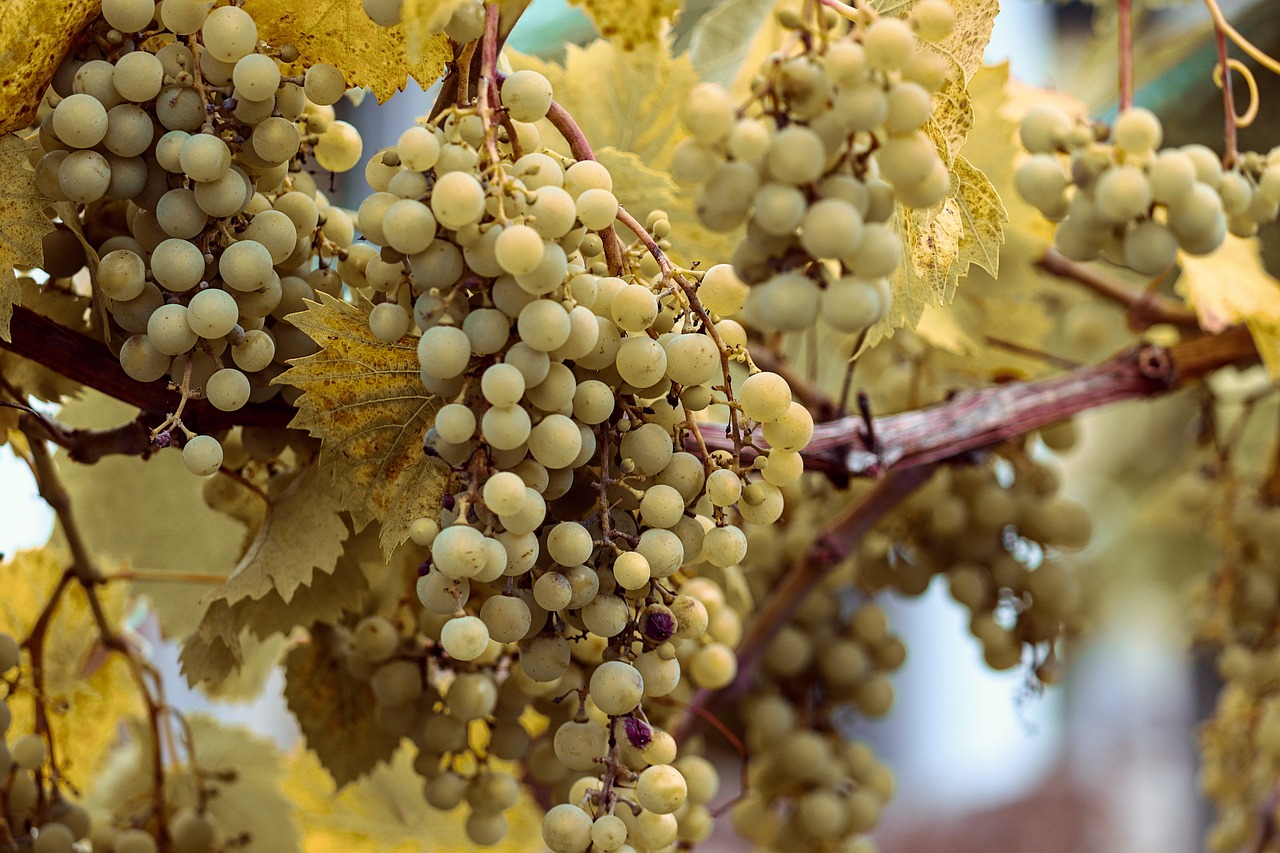
Soil Health and Fertility
When it comes to organic farming, one of the most crucial aspects is undoubtedly soil health. Think of soil as the heart of agriculture; without a healthy heart, everything else struggles to thrive. Healthy soil is rich in nutrients, teeming with life, and capable of supporting a diverse array of plants. To achieve this, organic farmers employ a variety of techniques that not only enhance soil fertility but also contribute to the overall sustainability of the ecosystem.
One of the primary techniques used in organic farming is crop rotation. This practice involves changing the type of crops grown in a particular area each season. Why is this important? Well, different plants have varying nutrient requirements and pest vulnerabilities. By rotating crops, farmers can naturally replenish soil nutrients while simultaneously reducing the buildup of pests and diseases that often occurs with monoculture farming. For instance, legumes are known to fix nitrogen in the soil, enriching it for subsequent crops. This not only boosts soil fertility but also minimizes the need for synthetic fertilizers, which can harm the environment.
Another vital practice is composting. This method transforms organic waste—like kitchen scraps, yard debris, and farm residues—into nutrient-rich compost that can be used to amend the soil. Imagine compost as a superfood for your soil; it’s packed with essential nutrients that enhance soil structure, improve moisture retention, and promote a healthy microbial ecosystem. By incorporating compost into their farming practices, organic farmers not only reduce waste but also create a sustainable nutrient cycle that benefits both their crops and the environment.
Additionally, cover cropping plays a significant role in maintaining soil health. Cover crops, such as clover or rye, are planted during off-seasons to protect the soil from erosion and nutrient leaching. These crops act like a protective blanket, preventing soil degradation while also adding organic matter back into the soil when they decompose. The result? A rich, fertile environment that supports robust plant growth.
To sum it up, the journey to healthy soil in organic farming is not just about what you put into it but also about how you treat it. By embracing practices like crop rotation, composting, and cover cropping, organic farmers can create a thriving ecosystem that benefits not only their crops but also the planet. This holistic approach leads to better yields, healthier food, and a more sustainable agricultural system overall.
- What is the main goal of organic farming? The primary goal of organic farming is to produce food while maintaining ecological balance and promoting biodiversity.
- How does organic farming benefit soil health? Organic farming improves soil health through practices like crop rotation, composting, and cover cropping, which enhance soil fertility and structure.
- Are organic products healthier than conventional ones? Many consumers believe organic products are healthier due to the absence of synthetic chemicals and pesticides, though research on nutritional differences is ongoing.
- What challenges do organic farmers face? Organic farmers often deal with higher labor costs, pest management issues, and market access challenges.

Composting Techniques
Composting is not just a trend; it's a powerful technique that transforms organic waste into a valuable resource for organic farming. Think of it as nature's recycling program, where kitchen scraps, yard waste, and other biodegradable materials find new life as nutrient-rich compost. This process not only enriches the soil but also helps in reducing waste that would otherwise end up in landfills. By embracing composting, farmers can significantly enhance soil health, leading to better crop yields and a more sustainable farming practice.
One of the most effective composting techniques is the hot composting method. This technique involves creating a compost pile that generates heat through microbial activity. The key is to maintain the right balance of carbon-rich materials (browns) and nitrogen-rich materials (greens). A well-aerated pile can reach temperatures between 130°F to 160°F (54°C to 71°C), which helps to kill pathogens and weed seeds. This method typically takes about 4 to 8 weeks to produce finished compost, making it a speedy option for farmers looking to enrich their soil quickly.
Another popular technique is vermicomposting, which utilizes worms to break down organic matter. Worms, particularly red wigglers, are incredibly efficient decomposers. They consume the organic waste and produce castings that are rich in nutrients. Vermicomposting can be done on a small scale, making it ideal for home gardeners or small farms. Setting up a vermicomposting system is straightforward: it requires a bin, bedding material, and of course, the worms. The result is a high-quality organic fertilizer that can boost plant growth.
For those with limited space, bin composting offers a compact solution. Composting bins can be purchased or made from recycled materials, and they allow for a controlled environment for composting. The bins help to keep the compost contained and can speed up the decomposition process. By regularly turning the compost, you can ensure that air circulates, which is essential for the microbes that do the hard work of breaking down the materials. This method is particularly useful in urban settings where space is at a premium.
In addition to these techniques, it's crucial to understand the importance of maintaining moisture in your compost. The ideal moisture level is similar to that of a damp sponge. If your compost is too dry, the decomposition process will slow down; too wet, and it can become anaerobic, leading to unpleasant odors. Regularly monitoring and adjusting the moisture content is key to successful composting. With the right techniques and a little patience, composting can become a cornerstone of organic farming, promoting soil health and sustainability.
- What materials can be composted? Most kitchen scraps, yard waste, and paper products are suitable for composting. However, avoid meat, dairy, and oily foods as they can attract pests.
- How long does it take to make compost? Depending on the method used, compost can take anywhere from a few weeks to several months to fully decompose.
- Can I compost in winter? Yes, composting can continue in winter, although the process may slow down due to colder temperatures. Insulating your compost pile can help maintain heat.
- Is composting difficult? Not at all! With a little knowledge and practice, anyone can start composting. It's about finding the right balance and being patient.
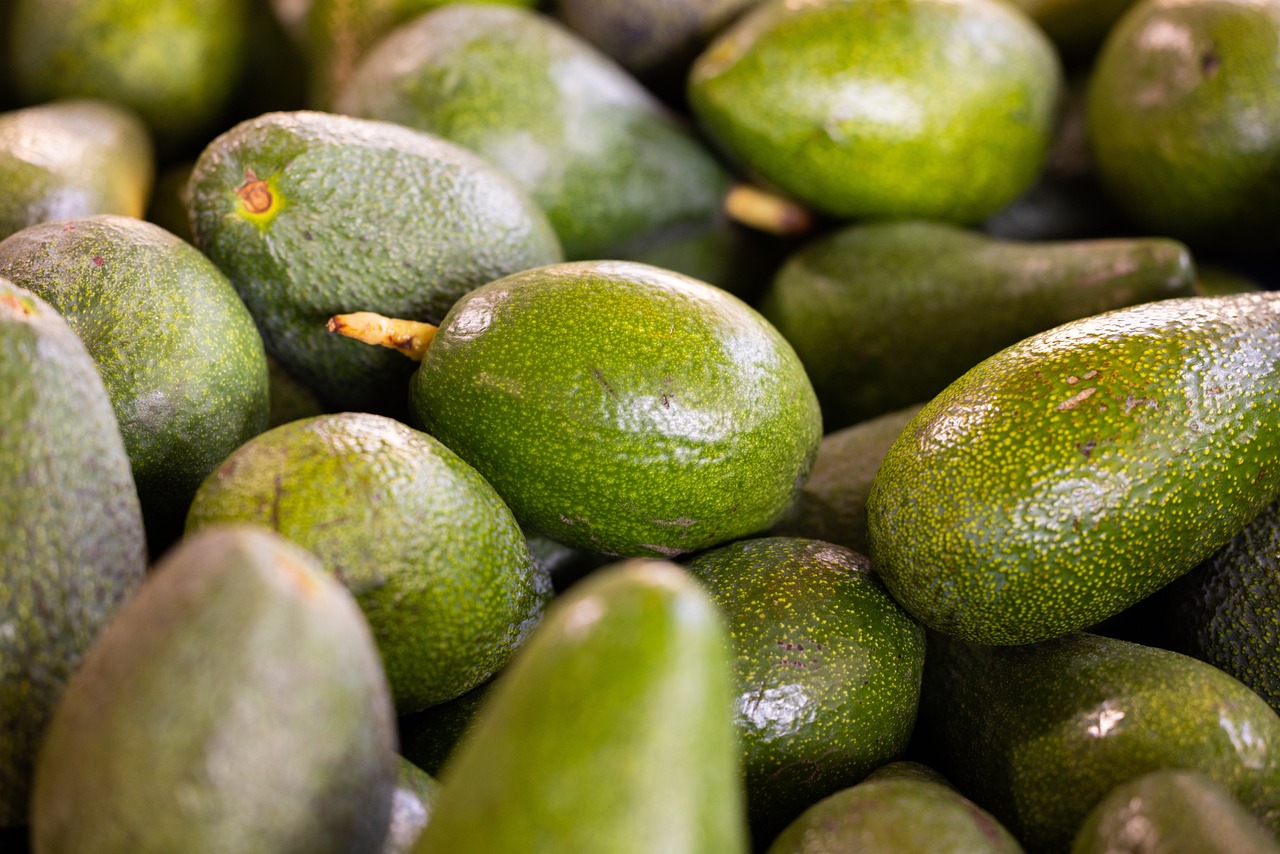
Crop Rotation Practices
Crop rotation is a fundamental practice in organic farming that plays a crucial role in maintaining soil health and productivity. By alternating the types of crops grown in a particular area over successive seasons, farmers can significantly enhance soil fertility, break pest and disease cycles, and improve overall crop yields. Imagine your garden as a musical symphony; each crop plays its own unique note, contributing to a harmonious balance that benefits the entire ecosystem.
One of the key benefits of crop rotation is its ability to replenish soil nutrients. Different crops have varying nutrient requirements and uptake patterns. For instance, legumes, such as peas and beans, have the unique ability to fix nitrogen in the soil, enriching it for subsequent crops. On the other hand, deep-rooted plants can help break up compacted soil, allowing better water infiltration and root penetration. This natural synergy not only reduces the need for synthetic fertilizers but also promotes a healthier soil structure.
In addition to enhancing soil fertility, crop rotation is an effective strategy for pest and weed management. By rotating crops, farmers can disrupt the life cycles of pests that thrive on specific plants. For example, if a farmer grows corn one year and then switches to a different crop like soybeans the next, pests that target corn will find it more challenging to survive. This approach minimizes the reliance on chemical pesticides, aligning perfectly with the principles of organic farming.
To implement a successful crop rotation plan, farmers can follow a few simple guidelines:
- Plan Ahead: Create a multi-year plan that outlines which crops will be planted each season. This foresight helps in managing soil nutrients and pest populations effectively.
- Diversity is Key: Incorporate a variety of crops into the rotation. This diversity not only benefits the soil but also creates a more resilient farming system.
- Monitor and Adjust: Keep track of crop performance and soil health. Based on observations, adjustments can be made to the rotation strategy to enhance productivity.
While crop rotation is a powerful tool, it does come with its challenges. For instance, farmers must be knowledgeable about the specific needs and growth habits of various crops. Additionally, the time and effort required to plan and manage a diverse crop rotation can be significant. However, the long-term benefits, including improved soil health, reduced pest pressures, and enhanced yields, far outweigh these initial hurdles.
In conclusion, crop rotation practices are not just a method of planting; they are a vital component of sustainable organic farming. By understanding and implementing these practices, farmers can cultivate a thriving ecosystem that benefits both their crops and the environment. Just like a well-rehearsed orchestra, when each crop plays its part, the result is a bountiful harvest that resonates with the principles of nature.
1. What is crop rotation?
Crop rotation is the practice of growing different types of crops in the same area across different seasons. This technique helps improve soil health, manage pests, and enhance crop yields.
2. How does crop rotation improve soil health?
By alternating crops, farmers can replenish soil nutrients, break pest cycles, and prevent soil degradation. Different crops have varying nutrient needs, which helps maintain a balanced nutrient profile in the soil.
3. Can crop rotation reduce the need for pesticides?
Yes, by disrupting the life cycles of pests and diseases that target specific crops, crop rotation can significantly reduce the reliance on chemical pesticides, making it a key practice in organic farming.
4. What are some examples of crop rotation?
A common rotation might include planting legumes one year, followed by a cereal crop like corn the next year, and then a root vegetable like carrots. This variety helps optimize soil health and crop productivity.
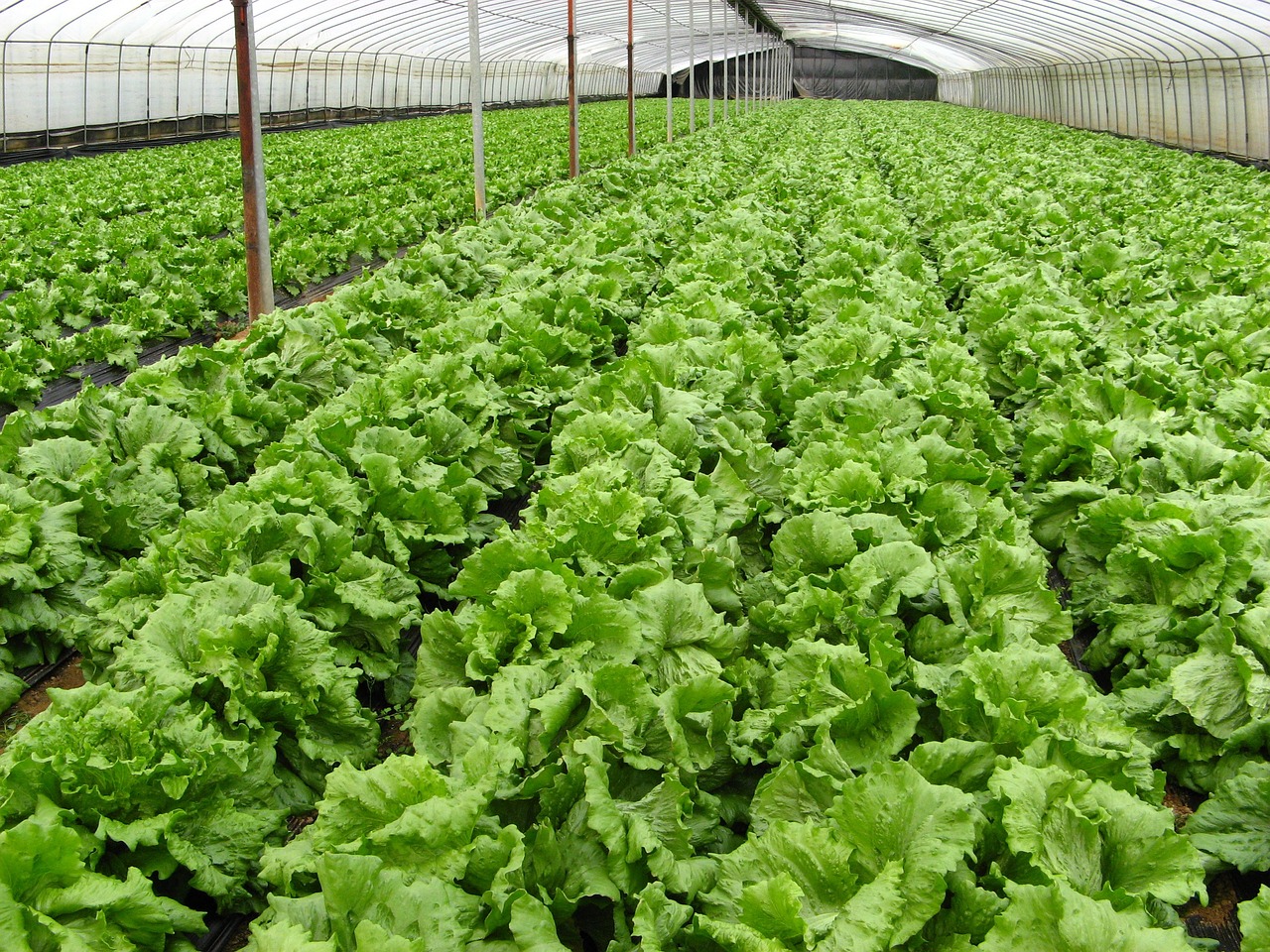
Biodiversity and Ecosystem Services
Biodiversity in organic farming is not just a buzzword; it's the lifeblood of sustainable agriculture. Imagine a vibrant ecosystem where various plants, animals, and microorganisms coexist harmoniously, each playing a critical role in maintaining the balance of nature. This rich tapestry of life contributes significantly to ecosystem services, which are the benefits that humans derive from the environment. These services include pollination, pest control, and nutrient cycling, all of which are essential for healthy crop production.
One of the most fascinating aspects of biodiversity is its ability to create a resilient agricultural environment. When farmers diversify their crops, they not only enhance their yields but also strengthen the ecosystem's ability to withstand pests and diseases. For instance, a farm that grows a variety of crops can attract beneficial insects, such as ladybugs and lacewings, which naturally control harmful pest populations. This reduces the need for synthetic pesticides, making the farming process more eco-friendly.
Moreover, diverse cropping systems improve pollination. Many crops depend on specific pollinators to produce fruit and seeds. By planting a mix of flowering plants, organic farmers can attract bees, butterflies, and other pollinators, ensuring that their crops thrive. This is particularly crucial in a world where pollinator populations are declining due to habitat loss and pesticide use. By fostering biodiversity, organic farming helps protect these vital species and secures food production for the future.
In addition to these benefits, biodiversity also plays a pivotal role in nutrient cycling. Different plants have varying root structures and nutrient needs, which means that they can utilize soil nutrients more efficiently. For example, legumes can fix nitrogen in the soil, enriching it and benefiting subsequent crops. This natural process reduces the reliance on synthetic fertilizers, promoting a healthier soil ecosystem.
To further illustrate the importance of biodiversity in organic farming, consider the following table that highlights the key ecosystem services provided by diverse agricultural systems:
| Ecosystem Service | Description | Benefits to Organic Farming |
|---|---|---|
| Pollination | Transfer of pollen from male to female parts of flowers | Increases crop yields and quality |
| Pest Control | Natural regulation of pest populations by predators | Reduces the need for chemical pesticides |
| Nutrient Cycling | Movement and transformation of nutrients in the ecosystem | Enhances soil fertility and plant health |
| Soil Erosion Prevention | Root systems of diverse plants stabilize soil | Maintains soil structure and health |
In conclusion, the integration of biodiversity into organic farming practices is not merely beneficial; it is essential for creating a sustainable agricultural system. By embracing a diverse range of crops and fostering a healthy ecosystem, organic farmers can enhance their productivity while simultaneously protecting the environment. The synergy between biodiversity and ecosystem services demonstrates that when we work with nature rather than against it, we can achieve a thriving agricultural landscape that nourishes both people and the planet.
- What is organic farming? Organic farming is a method of agriculture that relies on natural processes and materials to grow crops, avoiding synthetic fertilizers and pesticides.
- How does biodiversity benefit organic farming? Biodiversity enhances ecosystem services such as pollination, pest control, and nutrient cycling, leading to healthier crops and reduced reliance on chemicals.
- What challenges do organic farmers face? Organic farmers may encounter higher labor costs, pest management issues, and difficulties with market access.
- Is organic food healthier than conventional food? Many studies suggest that organic food may have higher nutrient levels and lower pesticide residues, but the health benefits can vary.

Challenges in Organic Farming
Organic farming, while a beacon of hope for sustainable agriculture, is not without its challenges. One of the most significant hurdles is the higher labor costs associated with organic practices. Unlike conventional farming, which often relies on synthetic fertilizers and pesticides, organic farming demands more manual labor and time-consuming methods. This increased labor can lead to higher production costs, which may deter some farmers from transitioning to organic methods.
Another challenge is pest management. Organic farmers must find innovative ways to control pests without the use of chemical pesticides. This often involves utilizing natural predators, implementing crop rotation, and employing organic-approved pesticides. While these methods can be effective, they are often more labor-intensive and require a deep understanding of ecological interactions. Farmers must be vigilant, as pest populations can quickly escalate if not managed properly.
Market access is yet another significant hurdle for organic farmers. The costs associated with obtaining organic certification can be prohibitive, especially for small-scale farmers. Additionally, the competition in the organic market is fierce, with numerous established brands dominating the shelves. Despite these challenges, the growing consumer demand for organic products offers a silver lining. Many consumers are increasingly willing to pay a premium for organic goods, recognizing the benefits they bring to health and the environment.
To further illustrate the challenges faced by organic farmers, consider the following table that outlines key obstacles:
| Challenge | Description |
|---|---|
| Labor Costs | Higher labor requirements due to manual practices. |
| Pest Management | Need for innovative, labor-intensive pest control methods. |
| Market Access | High certification costs and competition in the organic market. |
Despite these challenges, many organic farmers are finding ways to innovate and adapt. By sharing resources, collaborating with local organizations, and leveraging technology, they can overcome these obstacles. The journey of organic farming may be fraught with difficulties, but the rewards—both for farmers and consumers—are well worth the effort. As we continue to navigate the complexities of modern agriculture, the resilience of organic farmers stands as a testament to the potential of eco-friendly practices.
- What are the main challenges in organic farming? The primary challenges include higher labor costs, pest management, and market access.
- How do organic farmers manage pests? They use natural predators, crop rotation, and organic-approved pesticides.
- Is organic farming more expensive? Yes, due to the labor-intensive practices and certification costs, organic farming can be more expensive.
- Why is consumer demand for organic products increasing? Consumers are becoming more health-conscious and environmentally aware, leading to a preference for organic options.
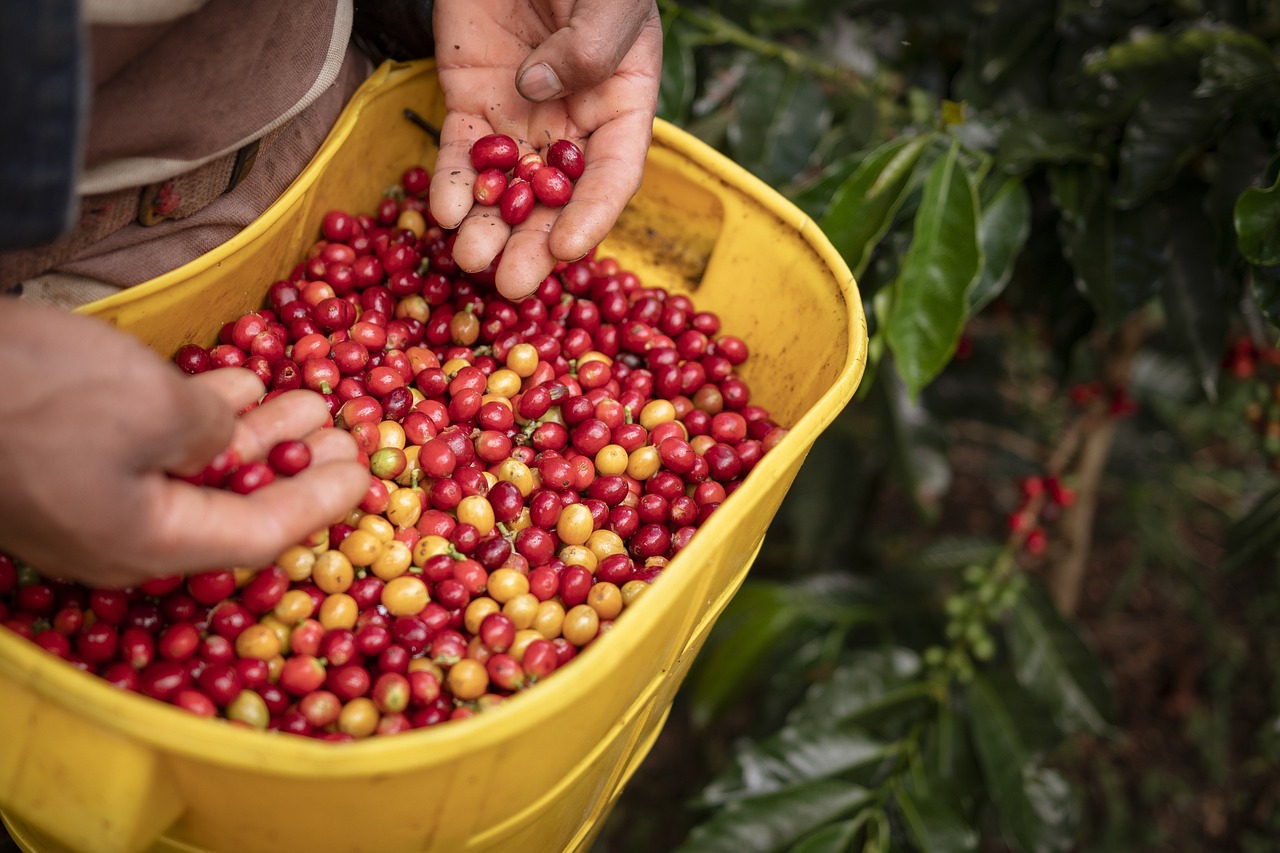
Pest and Disease Management
Pest and disease management in organic farming is a critical aspect that requires a blend of knowledge, creativity, and commitment. Unlike conventional farming, where synthetic pesticides are the go-to solution, organic farmers must rely on a variety of innovative strategies to keep their crops healthy. This approach not only promotes sustainability but also encourages a more harmonious relationship between agriculture and the environment. So, how do organic farmers tackle these challenges?
One of the primary methods used in organic pest management is the introduction of natural predators. These beneficial insects, such as ladybugs and lacewings, can help control pest populations without the need for chemical interventions. By fostering an ecosystem where these allies can thrive, organic farmers create a balance that naturally mitigates pest issues. Imagine having a tiny army of ladybugs patrolling your crops, ready to feast on aphids and other harmful pests!
Additionally, organic farmers often utilize organic-approved pesticides. These substances are derived from natural sources and are designed to target specific pests without harming beneficial organisms. However, it's important to note that even these alternatives can be more labor-intensive to apply compared to their synthetic counterparts. Farmers must be vigilant, monitoring their crops closely and applying treatments at just the right time to maximize effectiveness.
Another innovative strategy in organic pest management is the practice of crop diversity. By planting a variety of crops in close proximity, farmers can disrupt the life cycles of pests and reduce their spread. For instance, intercropping—growing different crops together—can confuse pests and make it harder for them to locate their preferred host plants. This method not only helps in pest control but also enhances soil health and promotes biodiversity.
In addition, organic farmers often implement cultural practices that promote plant health and resilience. Techniques such as proper spacing, timely planting, and crop rotation can significantly reduce the likelihood of pest infestations and diseases. For example, rotating crops helps break the life cycle of pests that thrive on specific plants, ultimately leading to healthier harvests. It’s like giving your crops a fresh start every season!
Despite these strategies, managing pests and diseases organically can still be challenging. Factors such as weather conditions, pest resistance, and the availability of natural predators can impact the effectiveness of these methods. Therefore, organic farmers must remain adaptable and continuously educate themselves about the latest advancements in organic pest management.
To sum it up, while pest and disease management in organic farming may seem daunting, it is also an exciting opportunity for innovation and creativity. By embracing natural processes and fostering biodiversity, organic farmers not only protect their crops but also contribute to a healthier ecosystem. As we move towards more sustainable agricultural practices, understanding and supporting these methods becomes increasingly important.
- What are the main challenges of organic pest management? Organic pest management faces challenges such as higher labor costs, the need for constant monitoring, and the reliance on natural predators and organic pesticides.
- Can organic farming be as productive as conventional farming? Yes, with proper techniques and practices, organic farming can yield comparable, if not superior, results while promoting environmental health.
- How can consumers support organic farming? Consumers can support organic farming by purchasing organic products, advocating for sustainable practices, and educating themselves about the benefits of organic agriculture.
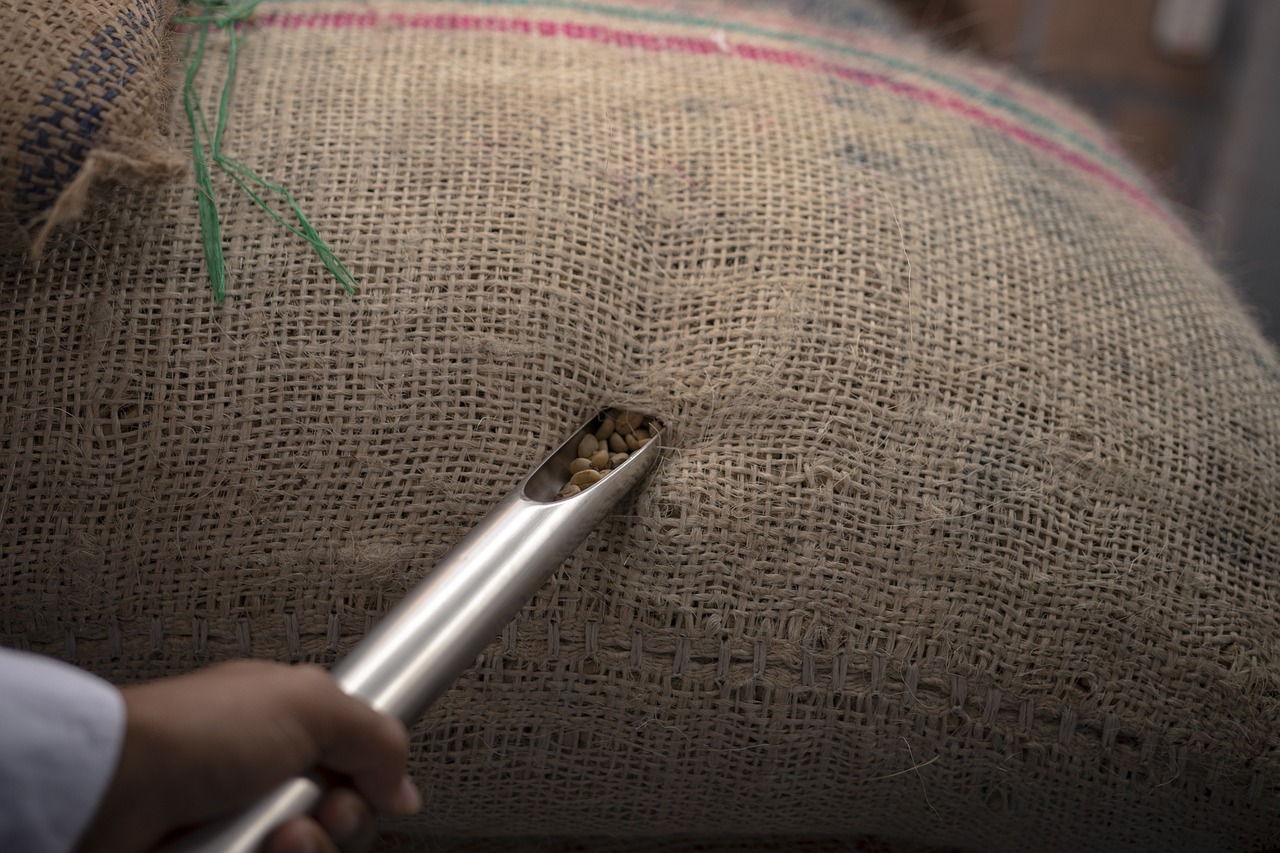
Market Access and Consumer Demand
In the world of organic farming, market access and consumer demand are two sides of the same coin. Farmers who embrace organic practices often find themselves grappling with the complexities of entering a marketplace that is both rewarding and challenging. On one hand, the demand for organic products is skyrocketing as more consumers become health-conscious and environmentally aware. On the other hand, the barriers to entry can be daunting. Many organic farmers face significant hurdles, such as the high costs associated with obtaining organic certification and navigating the intricate supply chains that often favor larger, conventional farms.
To truly understand the dynamics at play, let’s break down the factors influencing market access and consumer demand in the organic sector:
| Factor | Impact on Market Access | Impact on Consumer Demand |
|---|---|---|
| Certification Costs | High initial investment can deter small farmers. | Consumers trust certified products, boosting demand. |
| Distribution Channels | Limited access to retailers and wholesalers. | Growing interest in local and organic products. |
| Consumer Awareness | Education can help open new markets. | Informed consumers are more likely to choose organic. |
As illustrated in the table above, the initial costs of certification can be a significant barrier for many small-scale farmers. However, once they achieve certification, it often opens doors to premium pricing and access to niche markets that value organic products. The challenge lies in balancing these costs with the potential for increased revenue from a growing base of health-conscious consumers.
Moreover, the rise of local food movements has created a unique opportunity for organic farmers. Consumers are increasingly drawn to the idea of supporting local agriculture, and farmers who can effectively communicate their organic practices and the benefits of their products are likely to find a receptive audience. Farmers' markets, community-supported agriculture (CSA) programs, and farm-to-table restaurants are just a few avenues through which organic farmers can connect directly with consumers.
In addition to local markets, online sales have become a game-changer in recent years. With the growth of e-commerce, organic farmers can now reach consumers beyond their geographic location. This shift not only increases market access but also allows farmers to build a loyal customer base that values transparency and sustainability. However, this transition requires farmers to adapt to new marketing strategies and logistics, which can be a learning curve for those accustomed to traditional farming methods.
Ultimately, the intersection of market access and consumer demand presents both challenges and opportunities for organic farmers. As they navigate these waters, it's crucial for them to stay informed about market trends, consumer preferences, and innovative distribution methods. By doing so, they can position themselves to not only survive but thrive in the ever-evolving landscape of organic agriculture.
- What is organic farming? Organic farming is an agricultural method that avoids synthetic fertilizers, pesticides, and genetically modified organisms, focusing instead on natural processes and materials.
- How does organic farming benefit the environment? Organic farming enhances biodiversity, improves soil health, and reduces pollution by minimizing chemical inputs.
- Why is organic certification important? Certification assures consumers that the products they purchase meet specific organic standards, fostering trust and encouraging market growth.
- What challenges do organic farmers face? Organic farmers often encounter higher labor costs, pest management issues, and difficulties in accessing markets compared to conventional farmers.
Frequently Asked Questions
- What is organic farming?
Organic farming is a holistic approach to agriculture that focuses on using natural processes and materials to maintain ecological balance and biodiversity. It aims to produce high-quality food while preserving the environment.
- What are the benefits of organic farming?
Organic farming offers numerous benefits, including improved soil health, reduced chemical usage, and enhanced biodiversity. These factors contribute to a more sustainable agricultural system and provide healthier food options for consumers.
- How does organic farming improve soil health?
Healthy soil is crucial for organic farming. Techniques such as crop rotation, composting, and cover cropping enhance soil fertility. These practices lead to better yields and reduced erosion, ensuring that the soil remains productive over time.
- What is composting and why is it important?
Composting is the process of transforming organic waste into nutrient-rich soil amendments. It's vital in organic farming as it enriches soil health, reduces waste, and promotes a circular economy by recycling natural materials.
- What challenges do organic farmers face?
Organic farmers encounter several challenges, including higher labor costs, pest management issues, and market access difficulties. Understanding these obstacles is essential for the growth and sustainability of organic agriculture.
- How do organic farmers manage pests and diseases?
Managing pests and diseases in organic farming requires innovative strategies. This often includes using natural predators and organic-approved pesticides, which can be more labor-intensive compared to conventional methods.
- Is there a growing demand for organic products?
Yes! There is a significant increase in consumer demand for organic products. This growing interest presents opportunities for organic farmers, despite the challenges they may face in terms of certification costs and competition.



















